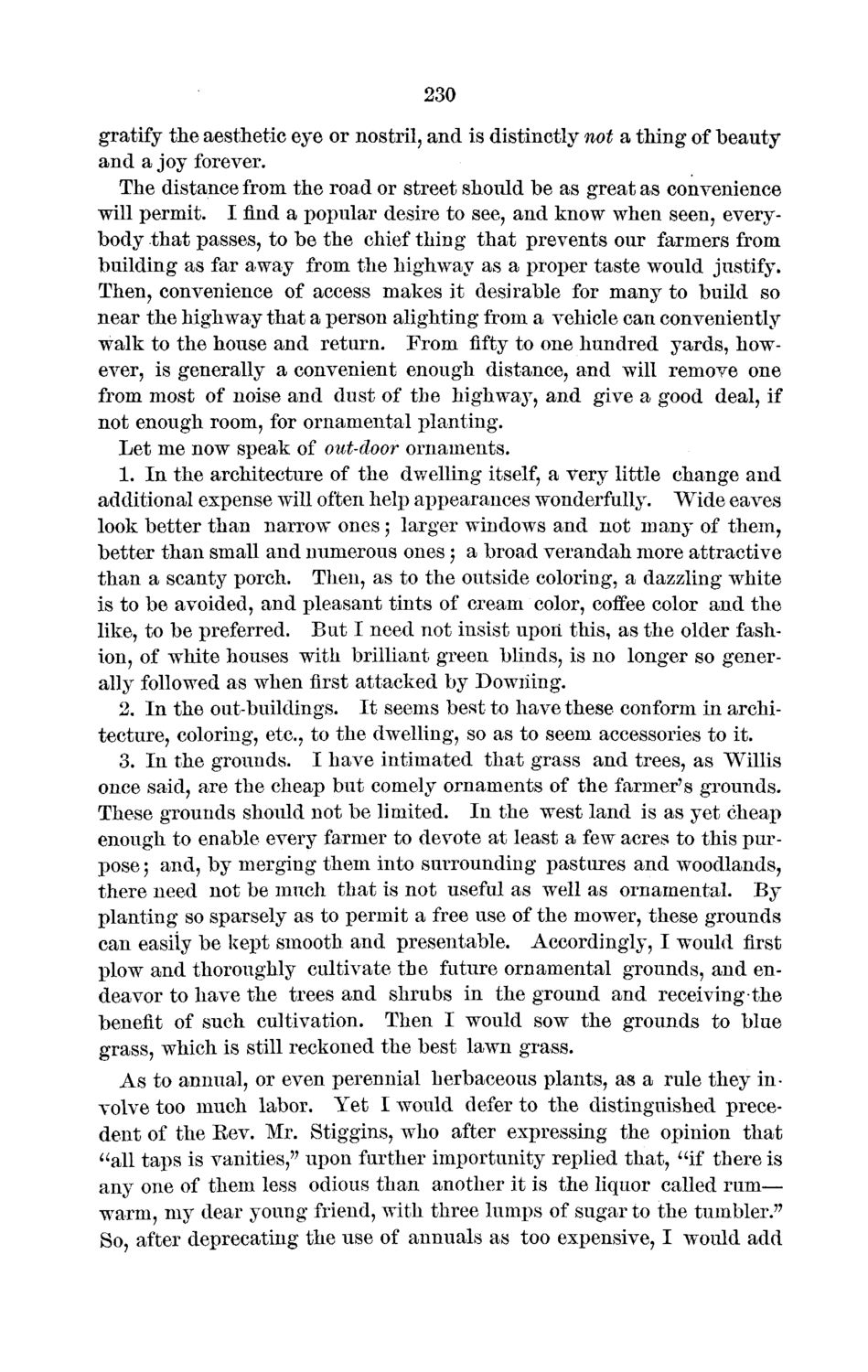| |
| |
Caption: Board of Trustees Minutes - 1872
This is a reduced-resolution page image for fast online browsing.

EXTRACTED TEXT FROM PAGE:
230 gratify the aesthetic eye or nostril, and is distinctly not a thing of beauty and a joy forever. The distance from the road or street should be as great as convenience will permit. I find a popular desire to see, and know when seen, everybody that passes, to be the chief thing that prevents our farmers from building as far away from the highway as a proper taste would justify. Then, convenience of access makes it desirable for many to build so near the highway that a person alighting from a vehicle can conveniently walk to the house and return. From fifty to one hundred yards, however, is generally a convenient enough distance, and will remove one from most of noise and dust of the highway, and give a good deal, if not enough room, for ornamental planting. Let me now speak of out-door ornaments. 1. In the architecture of the dwelling itself, a very little change and additional expense will often help appearances wonderfully. Wide eaves look better than narrow ones ; larger windows and not many of them, better than small and numerous ones; a broad verandah more attractive than a scanty porch. Then, as to the outside coloring, a dazzling white is to be avoided, and pleasant tints of cream color, coffee color and the like, to be preferred. But I need not insist upon this, as the older fashion, of white houses with brilliant green blinds, is no longer so generally followed as when first attacked by Downing. 2. In the out-buildings. It seems best to have these conform in architecture, coloring, etc., to the dwelling, so as to seem accessories to it. 3. In the grounds. I have intimated that grass and trees, as Willis once said, are the cheap but comely ornaments of the farmer's grounds. These grounds should not be limited. In the west land is as yet cheap enough to enable every farmer to devote at least a few acres to this purpose ; and, by merging them into surrounding pastures and woodlands, there need not be much that is not useful as well as ornamental. By planting so sparsely as to permit a free use of the mower, these grounds can easily be kept smooth and presentable. Accordingly, I would first plow and thoroughly cultivate the future ornamental grounds, and endeavor to have the trees and shrubs in the ground and receivingthe benefit of such cultivation. Then I would sow the grounds to blue grass, which is still reckoned the best lawn grass. As to annual, or even perennial herbaceous plants, as a rule they involve too much labor. Yet I would defer to the distinguished precedent of the Kev. Mr. Stiggins, who after expressing the opinion that "all taps is vanities,'7 upon further importunity replied that, "if there is any one of them less odious than another it is the liquor called rum— warm, my dear young friend, with three lumps of sugar to the tumbler.77 So, after deprecating the use of annuals as too expensive, I would add
| |